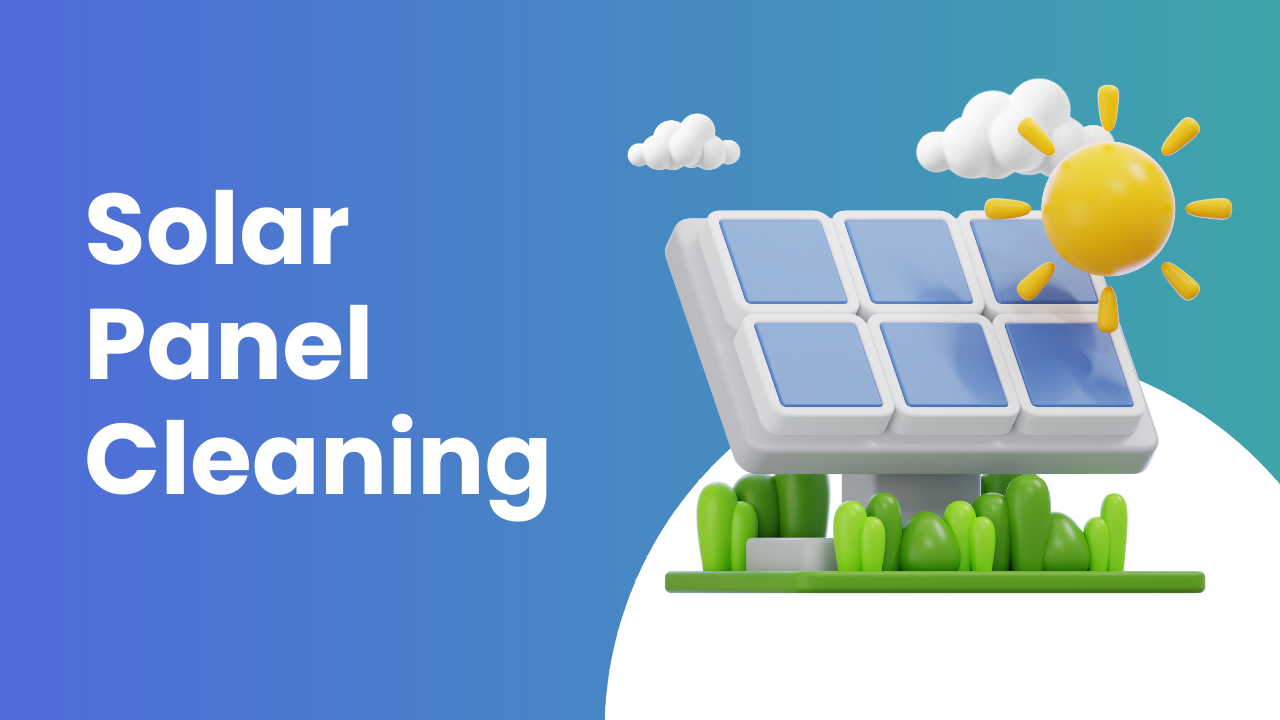Solar Panel Cleaning: Maximizing Efficiency and Longevity
Solar panels represent a significant investment in renewable energy, offering a sustainable and cost-effective way to power homes and businesses.
However, like any outdoor equipment, they are susceptible to the accumulation of dirt, dust, bird droppings, and other debris.
This buildup can significantly impact their performance, reducing their ability to convert sunlight into electricity. This is where solar panel cleaning comes into play.
While often overlooked, regular and proper cleaning is crucial for maintaining the efficiency and longevity of your solar panel system.
This article delves into the importance of solar panel cleaning, the factors affecting its frequency, different cleaning methods, and best practices for ensuring optimal panel performance.
The Impact of Dirt and Debris on Solar Panel Performance
The primary function of solar panels is to capture sunlight and convert it into usable electricity through the photovoltaic effect.
When a layer of dirt, dust, pollen, leaves, or bird droppings accumulates on the panel’s surface, it creates a barrier that obstructs sunlight from reaching the photovoltaic cells.
This obstruction reduces the amount of light absorbed, consequently decreasing the panel’s electrical output.
Studies have shown that even a thin layer of dust can reduce a panel’s efficiency by 5-15%, while heavy soiling can lead to losses exceeding 25%.
Over time, this diminished performance translates into significant financial losses, as less electricity is generated, leading to higher energy bills and a longer return on investment period.
Beyond reduced efficiency, accumulated debris can also lead to other issues:
- Hot Spots: Uneven soiling can cause localized overheating in certain areas of the panel, known as “hot spots.” These hot spots can damage the cells and shorten the panel’s lifespan.
- Etching: Bird droppings are particularly problematic as they are acidic and can etch the glass surface of the panels, causing permanent damage and further reducing light transmission.
- Mold and Mildew Growth: In humid climates, accumulated debris can trap moisture, creating an environment conducive to mold and mildew growth, which can further degrade panel performance and appearance.
Factors Affecting Cleaning Frequency
The frequency at which you need to clean your solar panels depends on several factors, including:
- Location: Panels located in areas with high levels of dust, pollen, or industrial pollution will require more frequent cleaning. Areas near construction sites, agricultural fields, or busy roads are particularly susceptible to rapid debris accumulation.
- Climate: Regions with frequent rainfall tend to have cleaner panels as rain can naturally wash away some of the dirt and debris. However, in arid or dusty climates, cleaning becomes even more critical.
- Panel Tilt: Panels with a steeper tilt angle are less prone to debris accumulation as gravity aids in runoff. Flat or low-tilt panels are more likely to collect dirt and require more frequent cleaning.
- Bird Activity: Areas with high bird populations will experience more frequent soiling from bird droppings, requiring more frequent cleanings.
- Tree Coverage: Panels located near trees may accumulate leaves, sap, and pollen more rapidly, necessitating more regular cleaning.
Cleaning Methods
There are several methods for cleaning solar panels, each with its advantages and disadvantages:
- Manual Cleaning with Water and a Soft Brush: This is the most common and recommended method for residential solar panels. It involves using a soft-bristled brush or sponge and a hose with a gentle spray nozzle to remove dirt and debris. This method is effective for light to moderate soiling and is generally safe for the panels.
- Professional Cleaning Services: For heavily soiled panels, large installations, or panels that are difficult to access, professional cleaning services are the best option. These companies utilize specialized equipment and techniques, including deionized water systems and specialized cleaning solutions, to ensure a thorough and safe cleaning.
- Automated Cleaning Systems: These systems are becoming increasingly popular, particularly for commercial solar installations. They typically involve robotic cleaners or sprinkler systems that automatically clean the panels at predetermined intervals. While more expensive upfront, they can reduce long-term cleaning costs and ensure consistent panel performance.
Best Practices for Solar Panel Cleaning
- Safety First: Always prioritize safety when cleaning solar panels. If you are uncomfortable working at heights or lack the proper equipment, hire a professional.
- Use the Right Equipment: Avoid using abrasive materials, harsh chemicals, or high-pressure washers, as these can damage the panels. Stick to soft brushes, sponges, and gentle cleaning solutions specifically designed for solar panels. Deionized or soft water is also recommended.
- Clean at the Right Time: The best time to clean solar panels is early in the morning or late in the afternoon when the panels are cool. Cleaning hot panels can cause thermal shock and potentially damage them.
- Inspect Your Panels: Before cleaning, inspect your panels for any signs of damage, such as cracks or loose connections. If you notice any issues, contact a qualified solar installer for repair.
- Rinse Thoroughly: After cleaning, ensure you rinse the panels thoroughly with clean water to remove any residual cleaning solution or debris.
- Monitor Performance: Keep an eye on your solar panel’s energy output. If you notice a significant drop in performance, it may be a sign that your panels need cleaning.
- Consider Professional Help: If you are unsure about any aspect of solar panel cleaning or your panels are heavily soiled, it’s best to consult with a professional cleaning service.
The Bottom Line: Investing in Clean Energy
Solar panel cleaning is not just about aesthetics; it’s about maximizing the efficiency and longevity of your investment in clean energy.
By understanding the impact of dirt and debris on panel performance and implementing a regular cleaning routine, you can ensure that your solar panels continue to generate clean, sustainable power for years to come.
This will result in lower energy bills, a faster return on investment, and a smaller carbon footprint.
Whether you choose to clean your panels yourself or hire a professional, the key is to be proactive and address soiling before it significantly impacts your system’s performance.
By incorporating solar panel cleaning into your regular maintenance schedule, you are not only protecting your investment but also contributing to a cleaner and more sustainable future.

